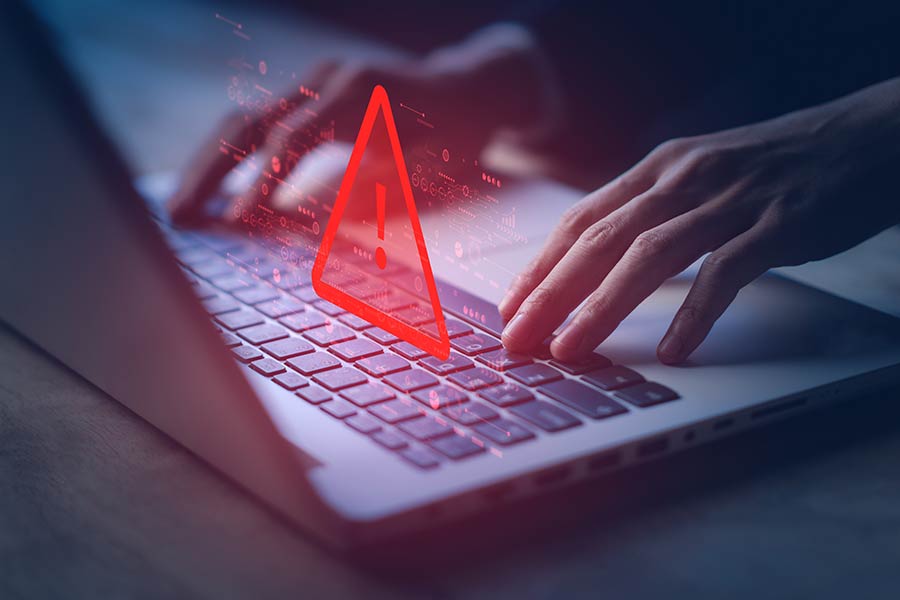Exam invigilators vs. remote proctoring software: pros & cons
As with much in education, assessments have been thoroughly disrupted by the digital revolution. Organisations that run tests now have a choice between traditional venue-based exams run by invigilators, or home-based exams that are overseen by remote proctoring software.
For many businesses, it’s a difficult choice to make, with test integrity often their biggest worry. How can software possibly match a team of eagle-eyed invigilators?
In this article, we outline the pros and cons of both in-person tests run by exam invigilators, and online tests run by remote proctoring software, with test integrity as a focus point throughout.
This should help you to decide which solution is right for your organisation.
Exam invigilators: Pros
1. Expert invigilators can be sharper than software
Despite the immense processing power of computers, they still lack the ingenuity of the human mind. An experienced exam invigilator may have the skills to detect even the most subtle forms of cheating, the temperament to help put candidates at ease, and the detail-oriented precision to manage every crucial part of the test – from verifying candidates to collecting their papers.
While much of this can be programmed into remote proctoring software, the subtle skill set of an experienced exam invigilator can be difficult to match.
An experienced exam invigilator may have the skills to detect even the most subtle forms of cheating, the temperament to help put candidates at ease, and the detail-oriented precision to manage every crucial part of the test.
2. Invigilators add the human element
We are a social species that thrives on contact with others. By attending a physically invigilated exam, candidates are guided through the process by real people who (should) help to put them at ease throughout. They can ask questions whenever they need, request forgotten items like pens or pencils, and just feel more comfortable in the fact that there are actual people who they can turn to.
This is a much more human experience for test candidates.
Exam invigilators: Cons
1. Humans are fallible
As humans, exam invigilators are not perfect (nor should they be). Regardless of their competency or level of skill, they still get tired, stressed, and complacent.
An invigilator who slept badly might give the wrong paper to the wrong candidate; they might miss a student’s well-hidden notes on their lap, or they may forgo their usual meticulousness when verifying students’ IDs for the test.
In addition, depending on their experience and reliability, invigilators may not always follow the strict instructions set out for the exam. All of these things affect the integrity of the test.
2. People can be expensive
Staff expenses can quickly add up for physically invigilated exams, especially if there are frequent exams set across multiple locations. Unfortunately, it isn’t a scalable solution.
Thinking of trying remote proctoring for your exams?
Learn five key steps that you’ll need to work through to make the exams a success.
Remote proctoring software: Pros
1. Remote proctoring software can ‘see’ multiple things at once
The beauty of software is that it can perform multiple tasks in conjunction. It doesn’t have a human brain that can only (truly) focus on one thing at once, which means it can monitor for various forms of cheating not just for a single candidate, but for thousands of candidates at once.
This is incredibly powerful, especially for large-scale testing.
Remote proctoring software can monitor for various forms of cheating not just for a single candidate, but for thousands of candidates at once.
2. Remote proctoring software never strays from the rules
By its nature, software always follows the rules/code in its programming. That means ID verification, test monitoring and infraction flagging are always carried out as programmed. They’re never altered, confused, or missed. This ultra-reliability and vigilance are impossible to match.
3. Remotely proctored online tests are scalable
Remotely proctored online tests don’t require expensive venues or invigilators. The tests are taken from candidate’s personal devices from potentially anywhere in the world. As you can imagine, this allows a boundless scalability for organisations who set large numbers of tests in various locations. Once the assessments are set up, they are essentially automated.
Depending on the test, this flexibility extends to time too, with candidates able to take the tests whenever it suits them – in the early hours of the morning if they want. Remote proctoring software is the ultimate shift worker!
Remotely proctored tests allow a boundless scalability for organisations who set large numbers of tests in various locations.
4. High-stakes tests can still include invigilators
For certain high-stakes tests, organisations may want to have human eyes watching over candidate’s exams. And that’s still possible with certain remote proctoring solutions, where invigilators (called ’proctors’ in this situation) are able to view test takers through their webcams to monitor for signs of cheating. They may watch a single test taker or multiple test takers at once, providing an extra level of credibility to the assessment.
Remote proctoring software: Cons
1. The exam’s credibility depends on how well the software can detect and restrict cheating
With the introduction of AI, remote proctoring software has developed in leaps and bounds. But it’s not without its faults.
The integrity of a remotely-proctored test really depends on how well it can do two things:
- Restrict cheating opportunities – The software needs to restrict access to websites, documents, and other materials that the test taker might use to help them with the test. It may also need to discern between acceptable websites and unacceptable websites.
- Detect cheating – The software must be able to accurately monitor behaviour that resembles cheating: regular or prolonged glancing away from the screen, detecting keystrokes in a different window/app on the computer, or even the types of items that are in the room.
While remote proctoring software will never be perfect at detecting cheating (just like physical exam invigilators), it must do it well enough to ensure that the assessment results are credible.
2. Software has bugs
Even the most well-developed software has bugs. Depending on their severity, they can cause all sorts of problems, from preventing test takers from accessing their tests to crashing halfway through.
The team behind well-developed remotely proctored software will always stay on top of its bugs, particularly those with the potential to jeopardise test integrity.
3. Remotely proctored online tests (may) require a stable internet connection
Depending on the sophistication of the software, remotely proctored online exams may need a strong internet connection free from dropouts, to protect the integrity of the test. If dropouts occur and the proctoring software temporarily stops, candidates may be able to use that time to cheat.
To ensure true credibility for the assessment, the software must be able to continue working regardless of internet dropouts.
To ensure true credibility for the assessment, the remote proctoring software must be able to continue working regardless of internet dropouts.
Exam invigilators vs remote proctoring – Which to choose?
As with most things, whether you choose invigilators or remote proctoring software depends on your unique situation.
Here’s a list of questions that can help you decide:
- Are the assessments high stakes? If the tests are extremely important, you may want to choose in-person exams with invigilators or a remote proctoring solution that allows for digital invigilation/proctoring.
- Are candidates spread across different cities or countries? If so, remotely proctored online exams are a much more cost-effective solution.
- Do you set lots of tests each year? Large test volumes are more affordable with remotely proctored online tests because there are no expensive venues or invigilators to arrange and pay for.
- Are candidates in areas with poor internet connectivity? If so, you may want to consider in-person exams with invigilators (unless you choose remote proctoring software that can handle internet dropouts).
- Do candidates have their own devices for taking tests? Some candidates may not have their own electronic devices for the tests, in which case in-person exams with invigilators are required.
Side-by-side comparison of exam invigilators vs remote proctoring
Here’s an easy-to-digest summary of exam invigilators compared to remote proctoring software. We hope it helps you to select a solution for your organisation.
| Exam invigilators | Remote proctoring software |
| They add a personal, human element to tests, which can reduce anxiety for test takers. | The software must be very well designed to guide users through the process and give them confidence. |
| Invigilators can get tired and stressed, leading to mistakes. | Software never gets tired or falters in its programming. |
| In-person exams with invigilators are good for high-stakes tests, but are expensive to scale. | High-quality remote proctoring software also works for high-stakes tests, and is affordable to scale. |
| Experienced invigilators can be better at detecting more subtle cheating, but their attention is limited. | Remote proctoring software can also be great at detecting cheating but may miss more clever or unusual forms. However, its attention/focus is essentially unlimited. |
| Invigilators don’t have software bugs, but they do have human quirks that can influence how well they do their jobs. | Software can have bugs. Depending on their severity, they may compromise the integrity of the test. |
About the author
Janison
Unlocking the potential in every learner
You might also like
Want to learn more about our tailored solutions?
Chat to one of our assessment or learning consultants today.
or call us on 1300 857 687 (Australia) or +61 2 6652 9850 (International)





